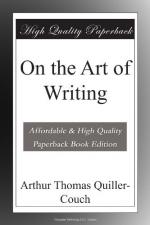These young or nascent bodies had a trick of breaking away after this fashion. For reasons no longer obvious they hankered specially towards Stamford or Northampton. Until quite recently, within living memory, all candidates for a Mastership of Arts at Oxford had to promise never to lecture at Stamford. A flood here in 1520, which swept away Garret Hostel Bridge, put Cambridge in like mind and started a prophecy (to which you may find allusion in the fourth book of “The Faerie Queene”) that both Universities would meet in the end, and kiss, at Stamford. Each in turn broke away for Northampton, and the worthy Fuller (a Northamptonshire man) has recorded his wonder that so eligible a spot was not finally chosen.
I have mentioned a flood: but the immediate causes of the migrations or attempted migrations were not usually respectable enough to rank with any such act of God. They started as a rule with some Town and Gown row, or some bloody affray between scholars of the North and of the South. Without diminishing your sense of the real fervour for learning which drew young men from the remotest parts of Europe to these centres, but having for my immediate object to make clear to you that, whatever these young men sought, it was not literature, I wish you first to have in your minds a vivid picture of what a University town was like, and what its students were like during the greater part of the 12th and 13th centuries; that is to say, after the first enthusiasm had died down, when Oxford or Cambridge had organised itself into a Studium Generale, or Universitas (which, of course, has nothing to do with Universality, whether of teaching or of frequenting, but simply means a Society. Universitas = all of us).
To begin with, the town was of wood, often on fire in places; with the alleviation of frequent winter floods, which in return, in the words of a modern poet, would ‘leave a lot of little things behind them.’ It requires but a small effort of the imagination in Cambridge to picture the streets as narrow, dark, almost meeting overhead in gables out of which the house slops would be discharged after casual warning down into a central gutter. That these narrow streets were populous with students remains certain, however much discount we allow on contemporary bills of reckoning. And the crowd was noisy. Men have always been ingenious in their ways of celebrating academical success. Pythagoras, for example, sacrificed an ox on solving the theorem numbered 47 in the first book of Euclid; and even to-day a Professor in his solitary lodge may be encouraged to believe now and then, from certain evidences in the sky, that the spirit of Pythagoras is not dead but translated.
But of the mediaeval University the lawlessness, though well attested, can scarcely be conceived. When in the streets ‘nation’ drew the knife upon ‘nation,’ ‘town’ upon ‘gown’; when the city bell started to answer the clang of St. Mary’s; horrible deeds were done. I pass over massacres, tumults such as the famous one of St Scholastica’s Day at Oxford, and choose one at a decent distance (yet entirely typical) exhumed from the annals of the University of Toulouse, in the year 1332. In that year




